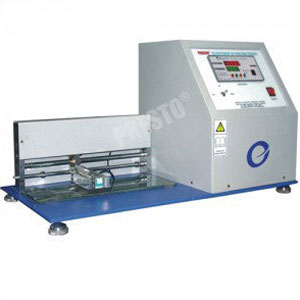The coefficient of friction testing is done to determine the easiness with which two facades when placed in contact with each other are able to slide on one another. The coefficient of friction testing helps to determine two values, i.e. Static friction and Kinetic friction.
Static friction contributes to determining the energy required to start the motion between two surfaces while the kinetic friction contributes to determining the resistance to sliding once both the facades are in relative motion.
As the cleanliness of the substrates are imperative to collect appropriate and reliable data, suitable measures should be addressed former to testing and taken further during testing to ensure freedom from grease and dirt that could unfavorably affect test results. The standard test method ASTM D 1894 is the best coefficient of friction test standard, which is preferred by manufacturers of many industries. Cleanliness methods and conditioning of substrates help to ensure that the customer will get the best value and results from their production.
Presto Stantest, a well-known manufacturer of testing instruments, offer a wide assortment of paper and packaging testing instruments. Presto’s Coefficient of friction tester helps to determine the coefficient of initial and sliding friction of papers, films, plastic sheets and pipes. The test is performed to analyze the stacking ability of plastic films and sheets. Moreover, the test helps the manufacturers in the plastic industry to avoid accidents caused due to various problems in packaging, loading and in transporting goods and materials. The uneven thickness of sheet leads to enhanced friction which leads to uneven strength of a plastic material. The coefficient of friction testing technique implicates the level of mistreatment a plastic material can endure without affecting the inside content.
